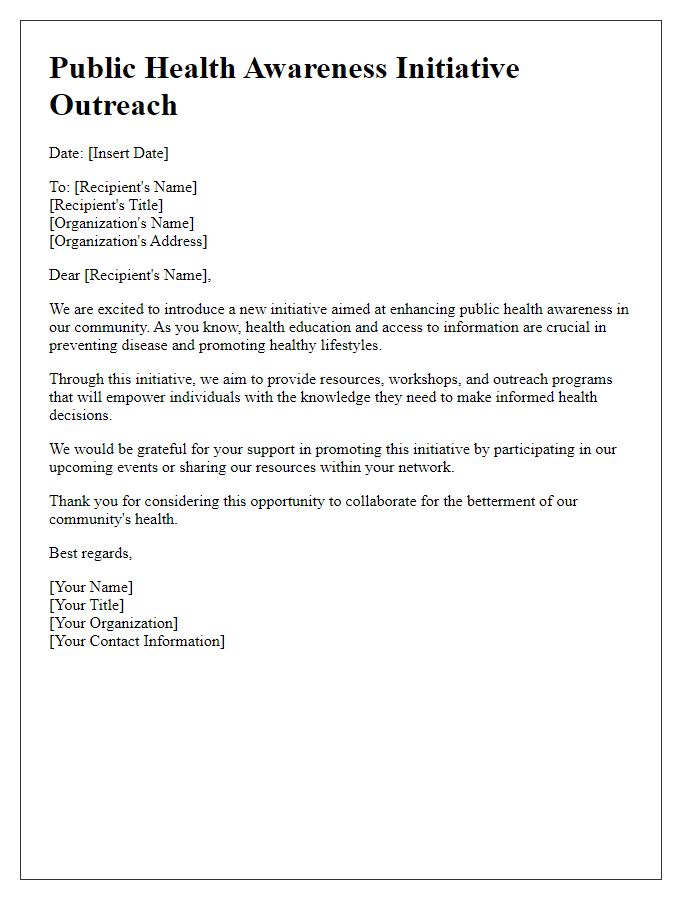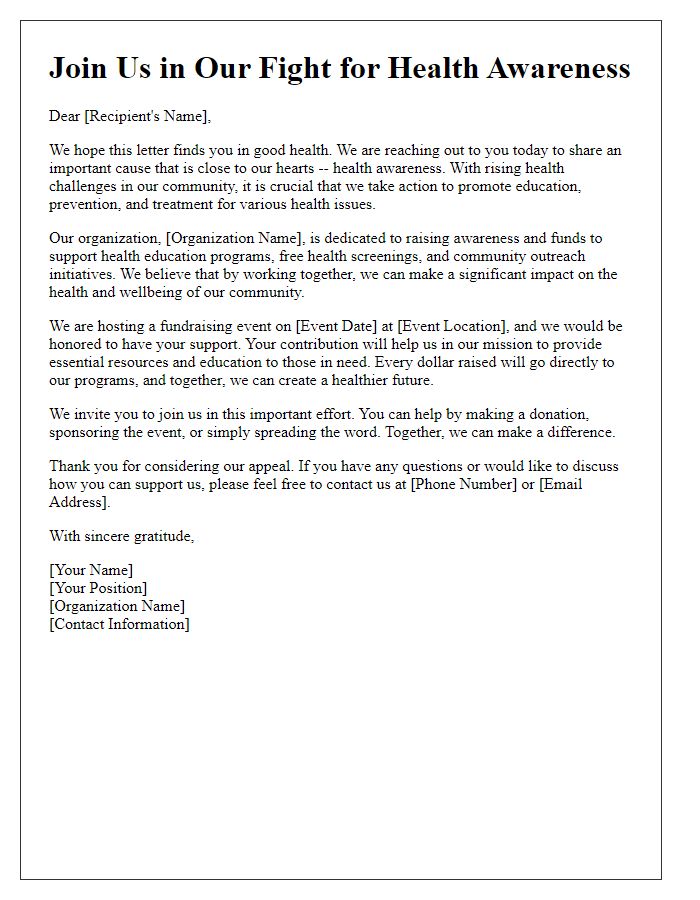Hello there! As we navigate through these challenging times, it's more important than ever to stay informed about public health and safety measures. Our latest campaign aims to empower you with the knowledge you need to protect yourself and your loved ones. We believe that awareness is the first step towards a healthier community, and we're excited to share valuable insights and tips with you. So, let's dive in and explore how you can contribute to a healthier tomorrow!

Clear Objective
Public health awareness campaigns focus on educating communities about health-related issues. Effective campaigns, such as those targeting smoking cessation or vaccination drives, aim to reduce disease incidence. Campaigns utilize social media platforms like Facebook and Twitter to reach a wider audience and engage in discussions. Informative brochures, workshops, and public service announcements are commonly used tools for conveying essential information about healthy behaviors. Collaboration with local health organizations, schools, and community centers enhances outreach efforts, enabling distribution of educational materials. Key statistics, such as the fact that smoking causes nearly 1 in 5 deaths in the United States, highlight the urgency and importance of awareness initiatives. The ultimate goal is to empower individuals to make informed choices that promote health and well-being.
Target Audience Identification
Public health awareness campaigns aim to educate and inform specific groups about health risks and preventive measures. Identifying the target audience is crucial for tailoring messages and strategies effectively. For instance, young adults aged 18-24 often engage in risky behaviors related to substance use, making them a significant focus for campaigns addressing addiction. Similarly, low-income families may require specific outreach regarding nutrition and exercise, due to limited access to healthy foods and recreational areas. Elderly individuals aged 65 and older face increased health risks such as chronic diseases, necessitating campaigns that emphasize preventative healthcare and regular check-ups. Identifying location-based audiences, such as urban areas with high pollution levels, enables campaigns to highlight air quality issues and respiratory health. Also, including diverse cultural backgrounds enhances the campaign's relevance, ensuring messages resonate across different communities.
Compelling Language and Tone
Public health campaigns often rely on compelling language and a persuasive tone to effectively reach their target audience. Engaging phrases combined with emotional appeals can effectively convey health risks and promote preventive measures. For instance, using statistics such as "one in four adults suffer from preventable diseases" can resonate strongly. Highlighting local statistics or recent health events in the community can add urgency to the message. References to effective programs, such as vaccinations or local wellness initiatives, can inspire action among readers. Invoking community pride when discussing efforts to improve public well-being fosters unity and collective responsibility. Including a call-to-action, such as participating in local health screenings or educational workshops, ensures that the message inspires proactive measures.
Evidence-based Information
Public health campaigns rely heavily on evidence-based information to effectively communicate risks and promote healthy behaviors among populations. For example, a recent study published in the Journal of the American Medical Association (JAMA) revealed that vaccination rates in urban areas increased by 25% after targeted outreach efforts. Local communities, such as those in Atlanta, Georgia, have seen successful engagement tactics like workshops and informational sessions leading to improved public awareness on diseases such as influenza and COVID-19. Tailored data, such as demographics, can help guide messaging strategies that resonate with specific populations, ultimately fostering a more informed public capable of making healthier choices. Additionally, peer-reviewed sources, like the Centers for Disease Control and Prevention (CDC) guidelines, serve as reliable references when educating the public about preventive measures and health screenings.
Call to Action
Public health awareness campaigns emphasize the importance of vaccination to prevent infectious diseases such as measles, mumps, and rubella. Vaccination rates, ideally over 95% in communities, are crucial to establish herd immunity, protecting vulnerable populations like infants and immunocompromised individuals. Events such as National Immunization Awareness Month in August serve as vital reminders to families about the significance of keeping their children's vaccination schedules up to date. Local health departments and schools often collaborate to host informational sessions, providing resources and guidance on vaccines, dispelling myths, and encouraging proactive health measures for overall community well-being.













Comments